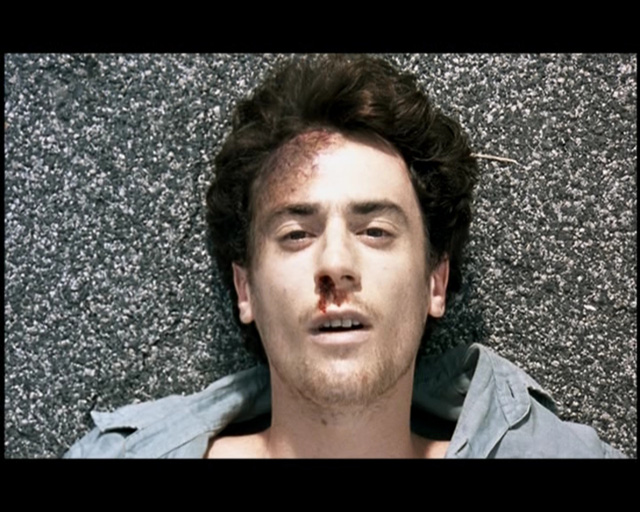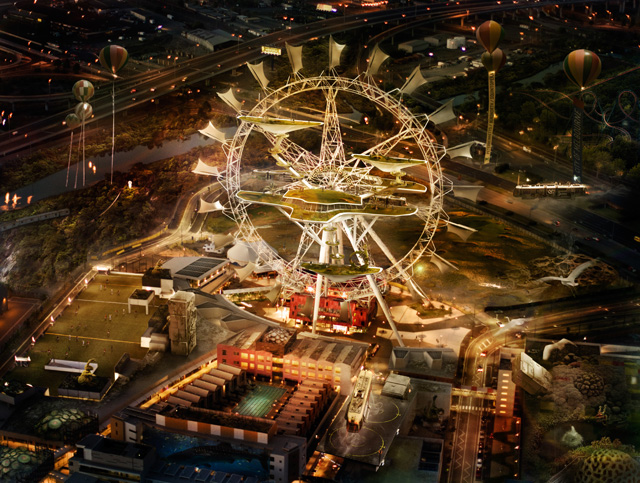PLASTIQUE FANTASTIQUE
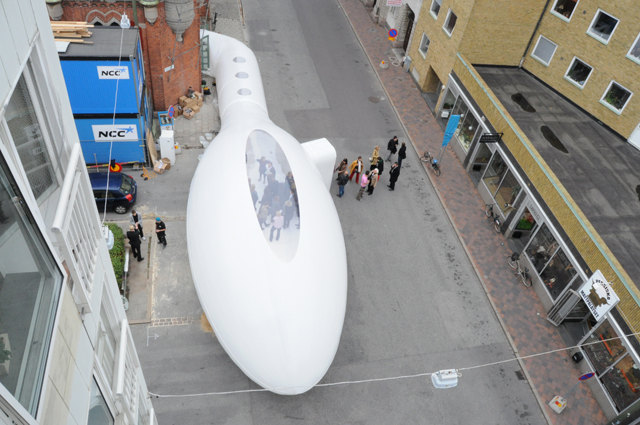
an interview with Marco Canevacci (Plastique Fantastique‘s founder) by Vanessa Todaro
Architecture is made up of journeys: from empty to full, from light to dark, from gravity to levity. And while nature has created strong materials such as wood and stone man on the other hand has invented plastic for the ‘inflatables’ to give air a shape Today there is nothing more than talk about sustainability and recycling, increasingly the aim of the present society is to achieve multifunctional spaces, avoiding waste and saturating, if possible, the urban fabric respecting the surrounding tissue. With this in mind we try to build structures that are versatile, non-intrusive and lightweight. The technical concept is based on the element air that becomes the building material of the inflatable. The inflatable is the evolution of the hut, the tent, and nomadic settlement takes ownership of the relationship between man and landscape. The use of the inflatable allows a different, fun and alternative way of living in a place in the city and landscape. A phenomenon that has developed through the simple assembly of the structure, and the ability to create attractive forms with the air. If at first inflatable structures were at the limits of utopia – think of the first hot-air balloons-with increasing frequency today they represent a functional solution which is rationally designed. Practical solutions and rationally designed projects such as Plastique Fantastique. An artistic duo, Markus Wust and Marco Canevacci, arrived in Berlin after the wall came down. The nature of their job is to create temporary spaces made of inflatable plastic bubbles that magically become spaces for sound installations or video projections born from the need to warm up cold winter in Berlin, the first great space where Mark lived in East Berlin.
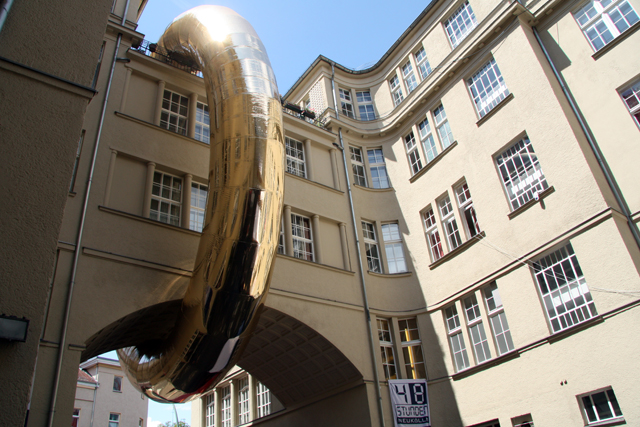
VT : Why did you choose the architecture of the inflatable?
MC : In 1999, after finishing his studies in architecture at the Technische Universität Berlin, economic / work situation is dramatic: the only resource available in abundance is ur- ban space.
Influenced by exceptional historical circumstances that have made the city a laboratory of the “temporary”, together with a group of friends we rent, for 750 marks a month, an in- dustrial ship that has been abandoned for ten years on the banks of the River Spree and we make our studio: the birth of “an der Schillingbrücke Deli.”
We find ourselves suddenly in 2000 square meters but lack the budget necessary to heat the space. The situation is bi- zarre and, drawing inspiration from the utopias of the late 60’s, we buy the cheapest material- polyethylene rolls – cre- ating our first pneumatic structures using fans to blow hot air. The result is great, the potential of these architectures is clear and fascinating.
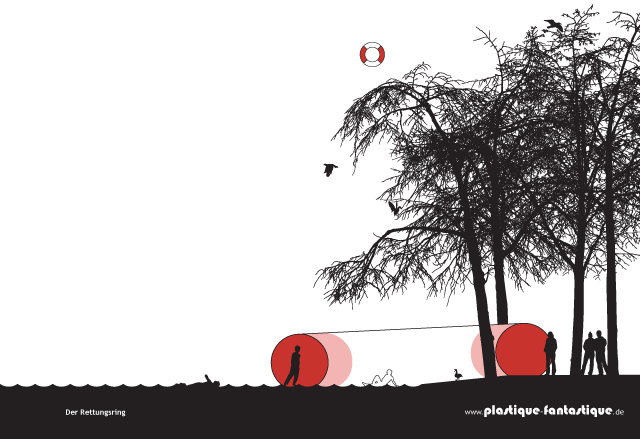
VT : In your projects collaboration between the engenery of the materials and structural engineering are crucia to create casings that are elastic, strong and bright. Can you describe the evolutionary process and construction of your projects?
MC : The “ideal project” is a temporary installation made specifically for a specific space. In this case, after an inspection, we develop a structure in function of the location, context and budget. The pleasure that we share with the public – who actively intervenes in and out of the installation – is temporarily occupy a portion of the territory and so there can be an exchange in relationships and points of view, creating a hybrid environment through the overlapping of public and an osmotic transit of existing symbols and codes tires, the mixing of climatic, optical, acoustic and social aspects.
VT : What are the problems to be addressed when building an inflatable?
MC : The only real problem is the presence of a strong wind, our greatest enemy. In general, what must be taken in account are the environmental conditions (location indoor / outdoor, wind, warm / cold), context (public / private), architecture (shape / detail) and technology (material / energy / intangible – the air).
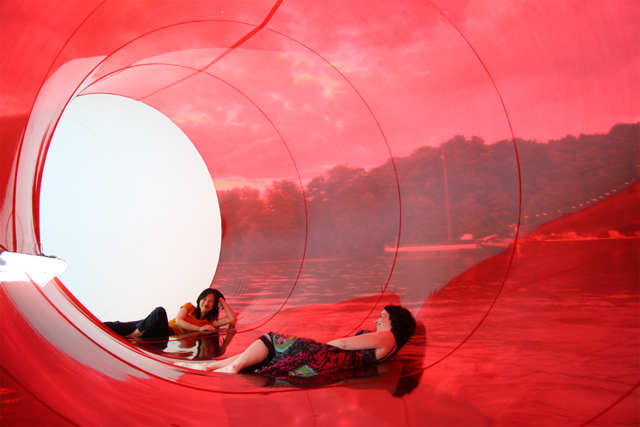
VT : From “recycling material” is it correct to talk about your project as a “recycling facility”?
MC : As mentioned above, the “ideal project” is the creation of an architecture tailored to fit. Opportunities for the reuse of structures that can be of second, third or fourth hand, however, are there – in the worst cases we have fun and improvise. The alternative is the “Recycling Center”.
VT : The greatest quality of the inflatable is to adapt to any shape, making architecture plastic, can this make us think of an “inflatable world”?
MC : Basically we work between sculpture and architecture. On the one hand we create aesthetic objects that reveal a space that no one sees or perceives in its complexity, such as a gold ring that highlights the entrance to a theater by wrapping a part of the building (RINGdeLUXE), or volume air that – expanding – fits between three facades of buildings in a courtyard in Berlin (SPACE INVADERS).
In the second case, designing living spaces that enable multiple realities and different uses: the presentation of a new bathing Ge- neva (MA plage), passing under a highway to the improvisation of a banquet of Duisburg (KÜCHENMONUMENT), up to make it possible to “preview” of the interior of a new contemporary art museum under construction in Malmö (Moderna Museet).
The space tire is designed to expand to at times (and against) the pre-existing outdoor space at other times to relocate up to be swallowed up or engulfed by the “pneuma.” In both cases, foster new interpretive possibilities through playful inter-subjective experience.
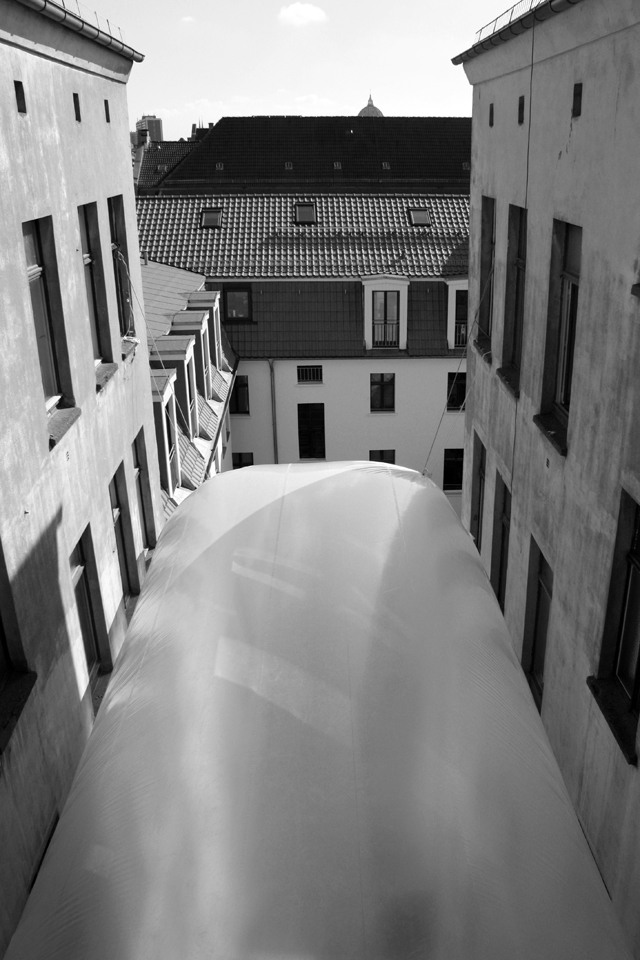
VT : Why Pink mix and Blue mix?
MC : Because it sounds tres chic! In reality we have tried to divide the projects that are more “artistic” from those that are strictly “business”. This subdivision is wrong but I, as there are synergies between these two aspects and transits, so in a sense my design pneumatic constantly try to mix these two definitions.
VT : Nit Lau, a translucent body that crea- tes “unusual boundaries”, how can we describe this project?
MC : Inflatable tunnels are the structures I prefer: simple to make, inexpensive, multi- purpose and performing.
These structures can in fact be used simultaneously as a room divider between more places (“partition”), as well as an infrastructure that connects them, it can become a projection screen that is visible from the inside and outside, and also a polyphonic sound body through the application of special “soundpads”.
Related Posts :
Category: Article
Views: 8880 Likes: 0
Tags: Glossary of chess , Hot air balloon , inflatable , Malmö , marco canevacci , Military Cross , Moderna Museet , PLASTIQUE FANTASTIQUE , Recycling
Comments:
Info:
Info:
Title: PLASTIQUE FANTASTIQUE
Time: 13 marzo 2012
Category: Article
Views: 8880 Likes: 0
Tags: Glossary of chess , Hot air balloon , inflatable , Malmö , marco canevacci , Military Cross , Moderna Museet , PLASTIQUE FANTASTIQUE , Recycling

